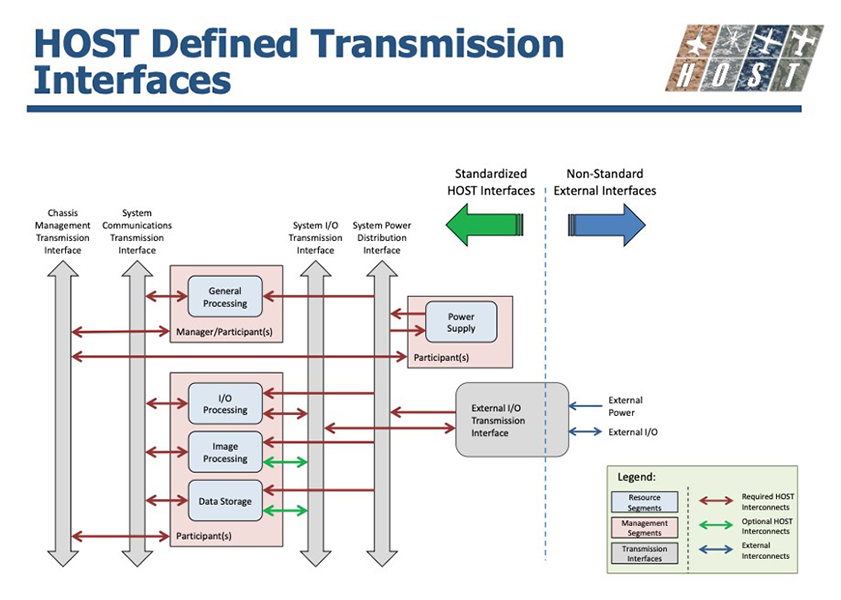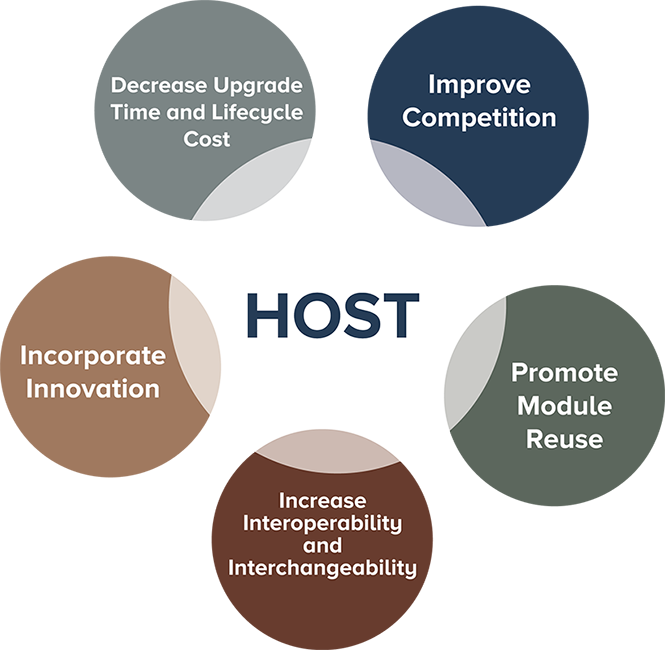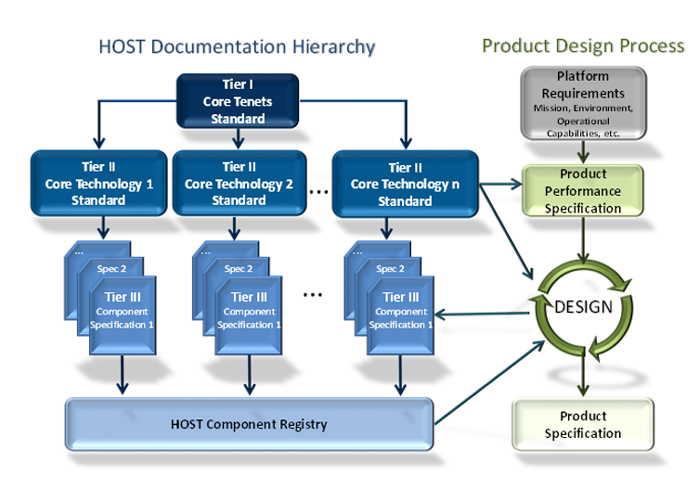Key Goals of HOST
- Increase Interoperability and Interchangeability – severable hardware modules to be changed independently.
- Incorporate Innovation – operational flexibility to configure and reconfigure available assets to meet rapidly changing operational requirements.
- Decrease Upgrade Time and Lifecycle Cost – use of COTS technology to break vendor locks, leading to faster upgrade time and lower component costs.
- Improve Competition – open architecture with well-defined interfaces and severable modules, allowing modules to be openly competed.
- Promote Module Reuse – reuse of technology, modules, and/or components from suppliers across different programs.
The HOST Standard was developed and sponsored by NAVAIR PMA-209. Unlike the Sensor Open Systems Architecture (SOSA™) Technical Standard and Future Airborne Capability Environment (FACE™) Technical Standard, HOST is not a consortium managed standard. Instead, the HOST standard is maintained by NAVAIR, who uses a team of academicians and industry members to coordinate with integrators, module vendors, and related standards groups such as the SOSA Consortium and VITA.
HOST Documentation Hierarchy
The HOST Documentation Hierarchy is organized using a tiered approach that is parallel to the product design process. This approach provides the flexibility needed to accomplish the goals of HOST’s key concepts.
HOST Tier 1
The Tier 1 Standard defines the core tenets of HOST and is the overarching document for the architecture as a whole. It outlines the overall guidelines for all HOST modules. It is technology and implementation agnostic and does not address platform-specific requirements.
Goals of HOST Tier 1:
- Define universal and technology-agnostic component requirements for hardware systems
- Enforce overarching system concepts of Interoperability, Modularity, and Upgradeability
- Define HOST terminology
- Define requirements that promote multi-vendor interoperable solutions
- Provision for standardized hardware management and monitoring capabilities
- Define the standards and requirements that will constrain the lower Tiers

HOST Tier 2
Tier 2 Standards define the technical requirements for a chosen core technology framework, such as OpenVPX. Tier 2 is also platform agnostic and does not incorporate specific Target System requirements.
- Establish a framework of open, commercial off-the-shelf (COTS) core technologies that can be applied to Tier 3 Specifications for modular components
- Define core technology requirements to facilitate module Interoperability and reuse
- Adhere to the requirements defined in the Tier 1 Standard related to the chosen Tier 2 technology
- Leverage industry standards to fit the needs of HOST
HOST Tier 3
The purpose of Tier 3 specifications are to facilitate modular system design, specification reuse, and upgradeability through the building of a collection of individual component specifications for given Tier 2 Core technologies over time. Tier 3 specifications are based upon the requirements of a given Tier 2 standard, platform-specific requirements, and product performance specifications.
Goals of HOST Tier 3:
- Combine subsystem specifications and HOST Tier 2 Standards to derive modular component specifications
- Define performance, functional, verification and documentation requirements
- Promote cross-platform component reuse through modular, portable specifications that define interoperable components
- Promote sustainment and acquisition at the component level
- Enable industry to build HOST components that can be used to upgrade existing HOST implementations in a timely and cost-effective manner
NOTE: Contact PMA-209 for a copy of the HOST Tier 3




